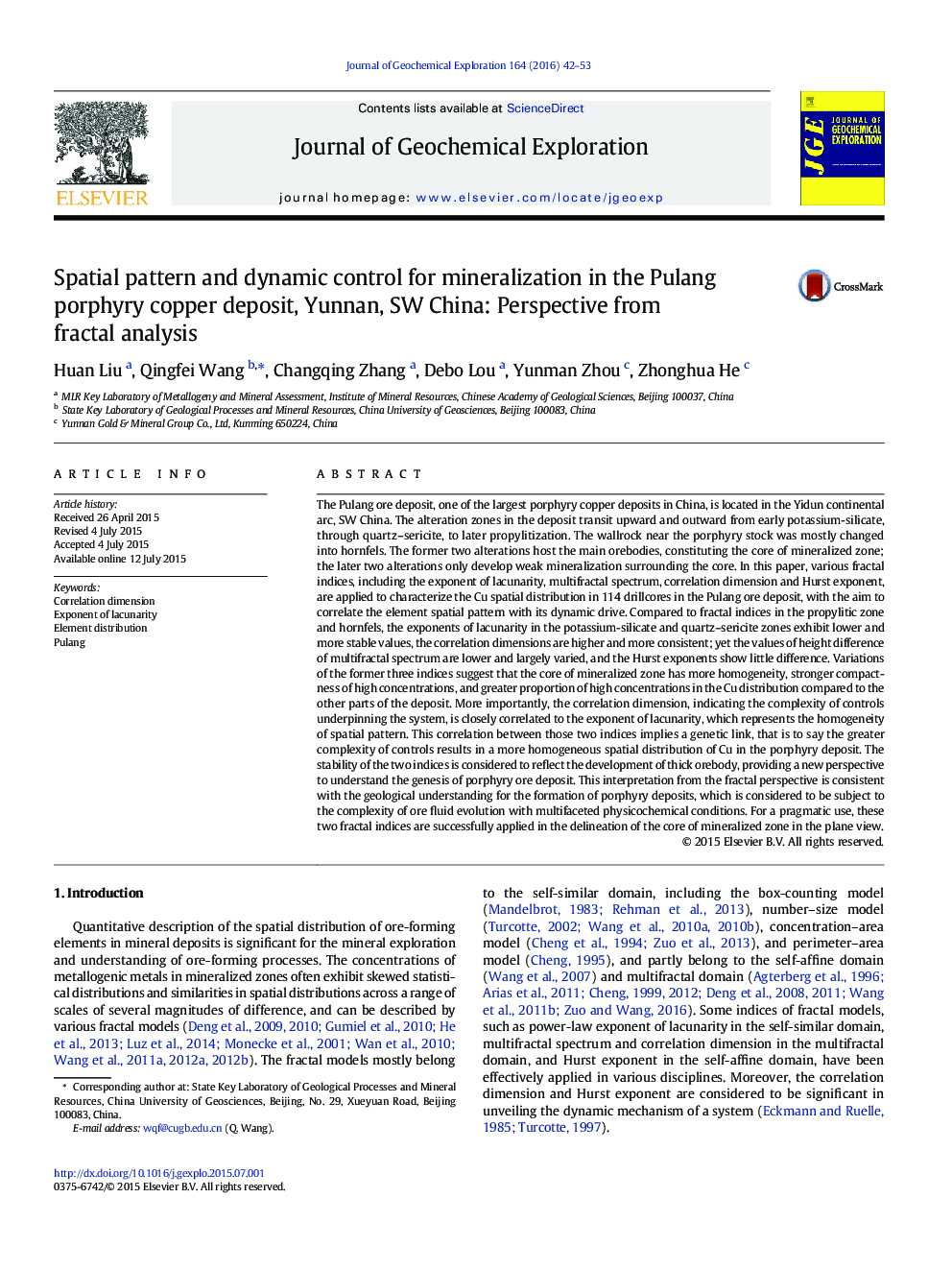| Article ID | Journal | Published Year | Pages | File Type |
|---|---|---|---|---|
| 4456978 | Journal of Geochemical Exploration | 2016 | 12 Pages |
•The distribution of Cu in Pulang porphyry deposit is controlled by alteration type.•Greater complexity of controls results in more homogeneous spatial pattern.•The correlation dimension D2 and exponent of lacunarity βL are inherently correlated.•The joint application of D2 with βL is effective to discriminate mineralization core.
The Pulang ore deposit, one of the largest porphyry copper deposits in China, is located in the Yidun continental arc, SW China. The alteration zones in the deposit transit upward and outward from early potassium-silicate, through quartz–sericite, to later propylitization. The wallrock near the porphyry stock was mostly changed into hornfels. The former two alterations host the main orebodies, constituting the core of mineralized zone; the later two alterations only develop weak mineralization surrounding the core. In this paper, various fractal indices, including the exponent of lacunarity, multifractal spectrum, correlation dimension and Hurst exponent, are applied to characterize the Cu spatial distribution in 114 drillcores in the Pulang ore deposit, with the aim to correlate the element spatial pattern with its dynamic drive. Compared to fractal indices in the propylitic zone and hornfels, the exponents of lacunarity in the potassium-silicate and quartz–sericite zones exhibit lower and more stable values, the correlation dimensions are higher and more consistent; yet the values of height difference of multifractal spectrum are lower and largely varied, and the Hurst exponents show little difference. Variations of the former three indices suggest that the core of mineralized zone has more homogeneity, stronger compactness of high concentrations, and greater proportion of high concentrations in the Cu distribution compared to the other parts of the deposit. More importantly, the correlation dimension, indicating the complexity of controls underpinning the system, is closely correlated to the exponent of lacunarity, which represents the homogeneity of spatial pattern. This correlation between those two indices implies a genetic link, that is to say the greater complexity of controls results in a more homogeneous spatial distribution of Cu in the porphyry deposit. The stability of the two indices is considered to reflect the development of thick orebody, providing a new perspective to understand the genesis of porphyry ore deposit. This interpretation from the fractal perspective is consistent with the geological understanding for the formation of porphyry deposits, which is considered to be subject to the complexity of ore fluid evolution with multifaceted physicochemical conditions. For a pragmatic use, these two fractal indices are successfully applied in the delineation of the core of mineralized zone in the plane view.
